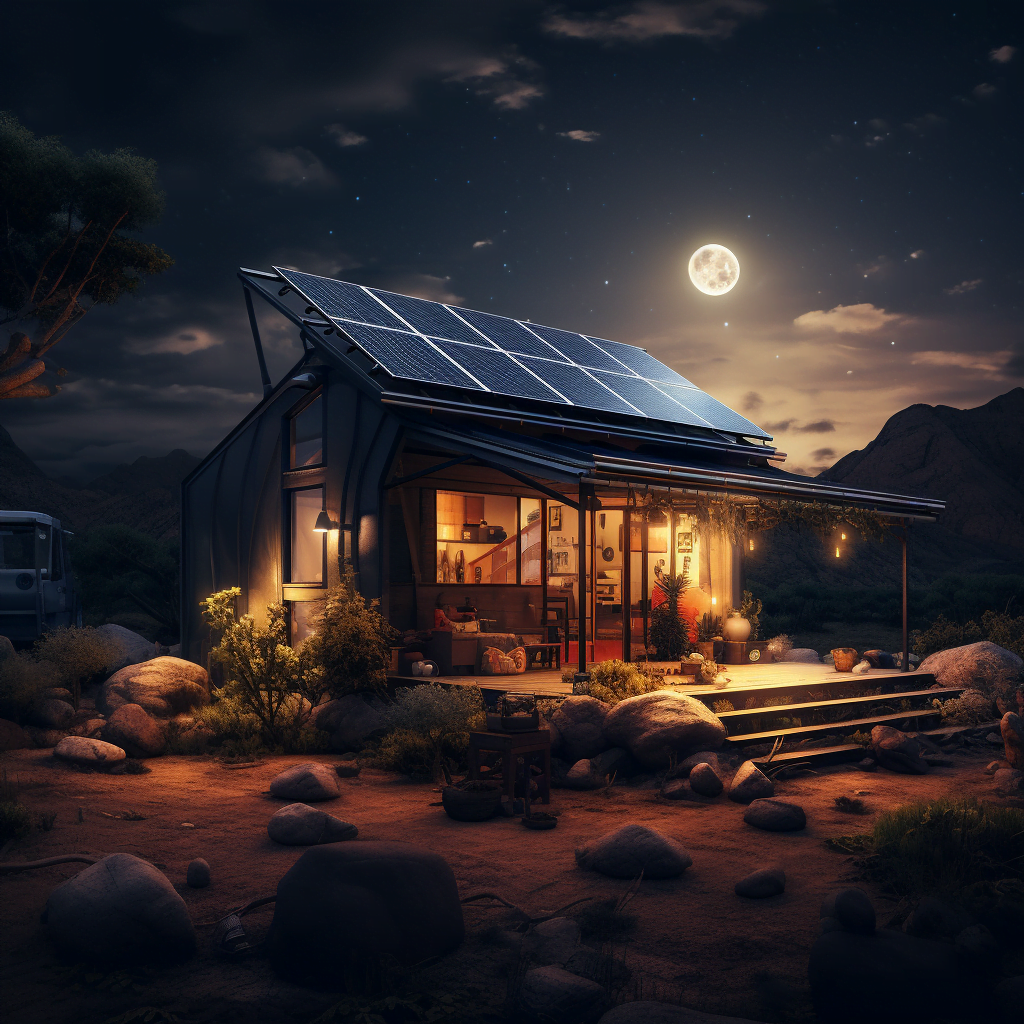Introduction
Immerse yourself in the world of energy autonomy with our comprehensive guide on off-grid solar power systems. This article covers a broad range of topics from the basic components of these systems to their intricate workings.
- Deciphering off-grid solar power systems
- Diving into their essential elements
- Unraveling the operations of off-grid solar
Step into a greener future with off-grid living.
Understanding the Magic of Off-Grid Solar
Absorbing Sunshine with Solar Panels
Harnessing the sun’s energy is the first step towards self-sufficiency. Solar panels, the primary components of our off-grid system, work tirelessly to capture this abundant natural resource. By converting sunlight into electricity, they set the foundation for off-grid living.
The Power Reservoir: Batteries
Storing the captured energy for future use is just as important as collecting it. That’s where batteries come into play. These energy storage units act like reservoirs, saving electricity for later use. This function is vital for times when sunlight is not readily available, like during nights or on cloudy days.
Regulating Energy with a Charge Controller
As the name suggests, a charge controller controls the amount of power going into the batteries. Think of it as a gatekeeper, ensuring the batteries aren’t overcharged during sunny days and not undercharged when sunlight is scarce. This balancing act extends the lifespan of the batteries, contributing to efficient and sustainable off-grid living.
Inverter: The Bridge Between Power Storage and Usage
Storing energy is only half the battle. For electricity to be useful in our homes, the stored power needs to be converted into a form our appliances can use. That’s where an inverter comes into play. This device transforms the direct current (DC) stored in batteries into alternating current (AC), the standard form of electricity used in most homes.
The Water Collection Analogy: Making Off-Grid Solar Relatable
Now, imagine if a solar power system was a water collection system. The solar panels would be like a wide roof area collecting rainwater. The batteries act like a large water tank, storing the rainwater for future use. And the charge controller could be compared to a valve, controlling the flow of water into the tank to prevent overflow or shortage. This analogy can help simplify the process of solar energy collection and storage, making it easier to grasp.
Importance of Correctly Sizing Components
Solar Array and Battery Bank: Maximizing Energy Storage
Just like you’d need a larger roof to collect more rainwater, you’d need more solar panels and batteries to store more energy. The size of your solar array (group of solar panels) and battery bank (group of batteries) directly impacts the amount of electricity you can store. Consequently, the more panels and batteries you have, the more energy you can save for later use.
Charge Controller: Finding the Right Fit
Matching the size of your solar array and battery bank with the right charge controller is critical. The controller needs to be able to handle the power produced by your solar panels while simultaneously managing the energy needs of your battery bank. Getting the sizing right is key to a well-functioning and efficient off-grid solar power system.
Inverter: Meeting Your Power Needs
The final component that needs careful sizing is the inverter. The inverter’s capacity must be tailored to your home’s voltage and power needs. This ensures that the converted electricity is sufficient to power your appliances without overloading the system.
Selecting the Perfect Solar Power Solution
As we delve into the technical aspects of off-grid solar power systems, it’s
important to remember that there is no one-size-fits-all solution. The perfect system depends on your individual energy needs, location, and personal preferences. For this reason, seeking professional assistance can be beneficial in choosing a personalized solution that fits you perfectly.
Conclusion
Embarking on the path of off-grid living can be a rewarding journey, offering a sense of freedom and sustainability that’s unmatched. Understanding how off-grid solar power systems work is the first step towards this eco-friendly lifestyle.
For more insights, check out the following articles:




